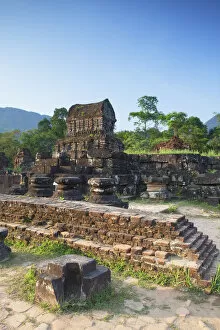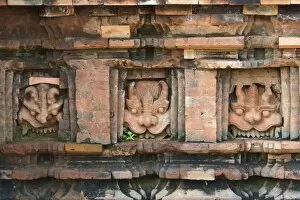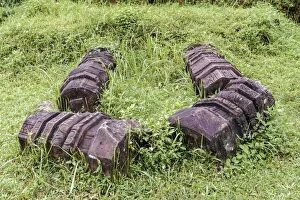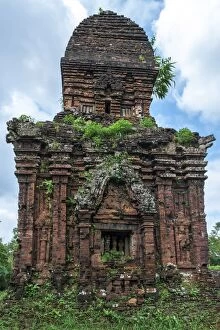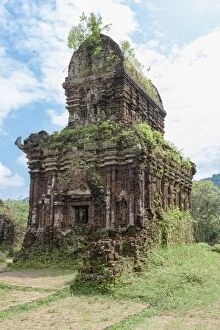My Son Sanctuary Collection
"Exploring the Enchanting Ruins of My Son Sanctuary, a UNESCO World Heritage Site in Hoi An, Quang Nam
For sale as Licensed Images
Choose your image, Select your licence and Download the media
"Exploring the Enchanting Ruins of My Son Sanctuary, a UNESCO World Heritage Site in Hoi An, Quang Nam, Vietnam" Step back in time at the captivating ruins of My Son Sanctuary, nestled amidst the lush landscapes of Hoi An, Quang Nam. This UNESCO World Heritage Site is a testament to the ancient Champa civilization that once thrived here in Indochina. As you wander through these historic grounds in Southeast Asia's vibrant heartland, be prepared to be awestruck by the intricate carvings and architectural marvels that adorn every corner. The ruined pillars with their artistic carving texture tell tales of a bygone era when this sanctuary was a thriving spiritual center for the Cham people. These weathered remnants offer glimpses into an ancient world steeped in rich cultural heritage and religious significance. Immerse yourself in history as you explore this sacred site where centuries-old temples stand proudly against time's relentless march. The Ancient Champa Ruined Temple at My Son Sanctuary serves as a poignant reminder of Vietnam's storied past and its deep-rooted connection to its ancestors. Join fellow travelers from around the globe who flock to this remarkable destination each year. Tourists can't help but feel humbled by the sheer magnitude and beauty of these ruins—a true testament to human ingenuity and craftsmanship. As you traverse through these mystical grounds, let your imagination run wild with stories untold and secrets whispered by ancient stones. The Ruins are not just relics; they are windows into an extraordinary chapter of Vietnamese history that continues to captivate visitors from all walks of life. So come embark on an unforgettable journey through time at My Son Sanctuary—where echoes from the past resonate with every step you take—and discover why it holds such profound importance within Vietnam's cultural tapestry.

